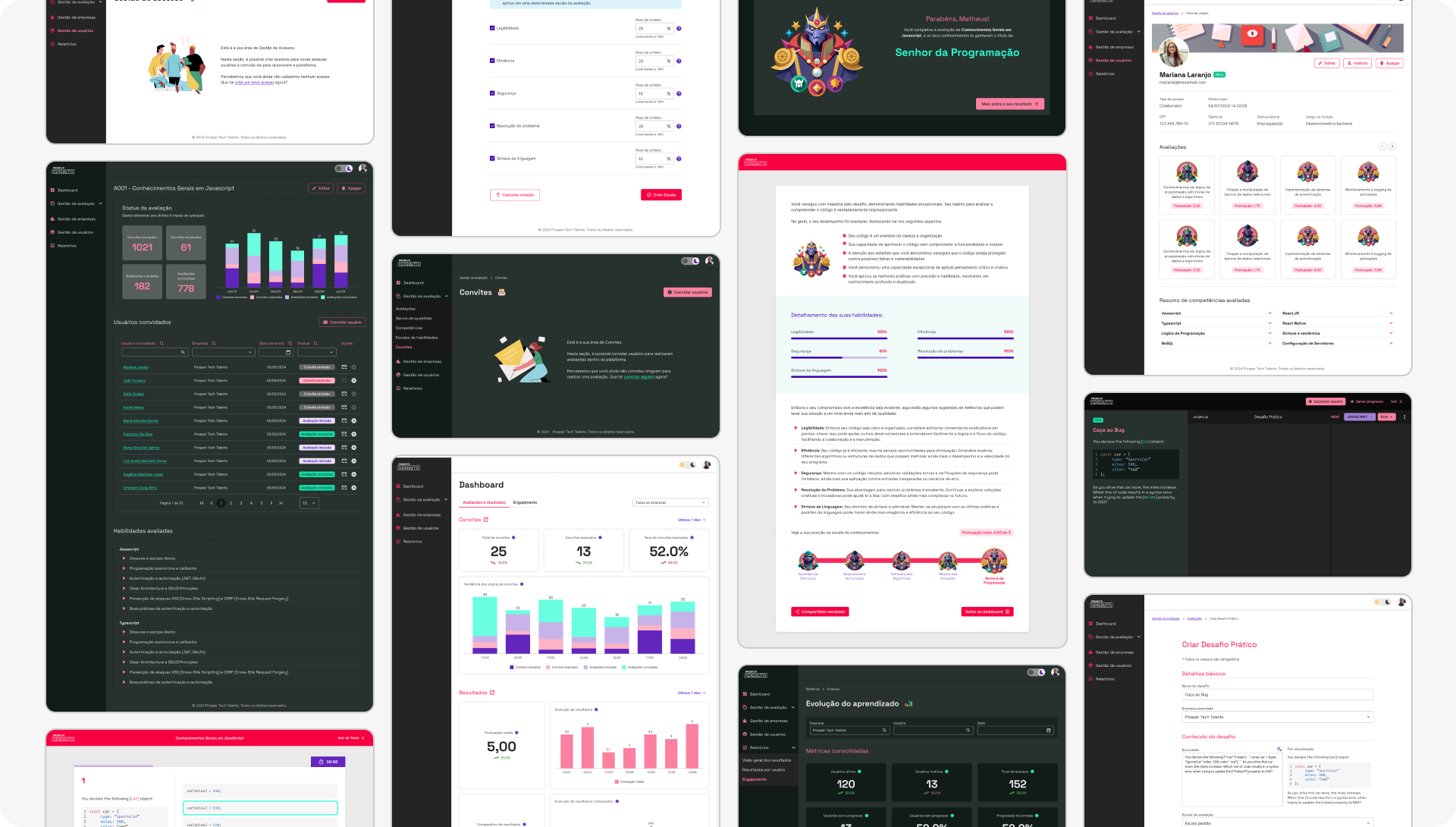Project summary
Prosper Sprints is a platform designed to transform tech recruiting for Prosper Tech Talents, a Brazilian start-up specializing in tailored upskilling and reskilling programs aimed primarily at minority candidates.
The goal was to automate key processes like assessment creation and study path planning, to boost productivity and reduce costs associated with the company's handcrafted approach.

01
The problem
The company faced significant challenges in scaling their tailored upskilling programs. The manual processes for assessment creation, study path planning, and event management were time-consuming and inefficient, leading to high operational costs that diminished their return on investment. Additionally, the lack of an engaging user experience resulted in low candidate satisfaction and increased drop-off rates.
To solidify their credibility in the competitive Brazilian market and achieve greater productivity, they needed a solution that balanced both efficiency and an appealing candidate journey.

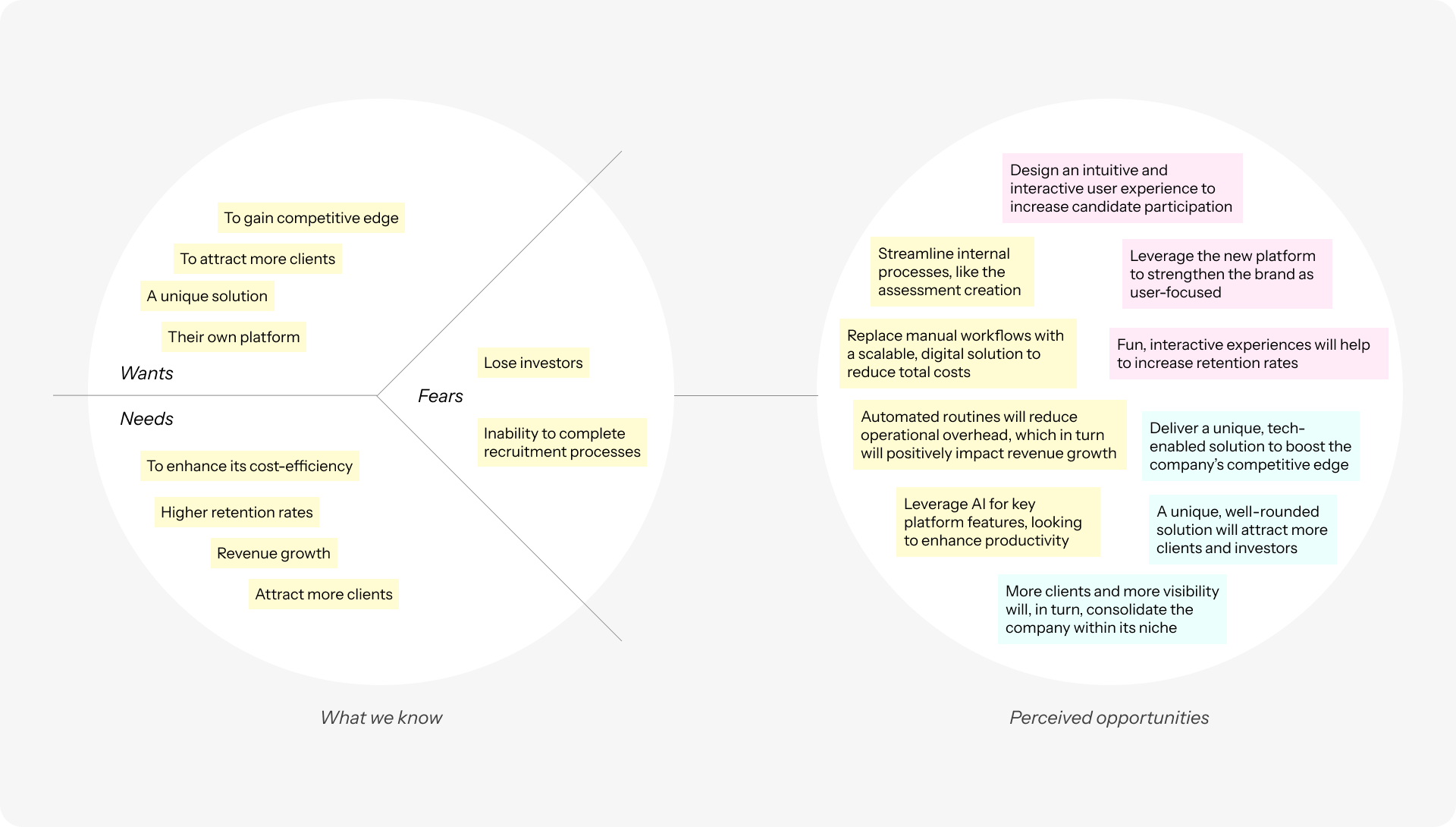
02
Opportunities
Addressing all these challenges revealed clear opportunities to streamline processes, enhance efficiency through AI, improve ROI, and create a more engaging experience for candidates and stakeholders.
Each of these broader opportunities were identified and presented to key stakeholders, and they agreed that they could then be broken down into smaller, actionable improvements throughout the product lifecycle.
.png)
03
Validation
During this process, I drew insights from multiple sources to ensure a well-rounded understanding of the problem. Key stakeholders—including the CEO, Head of Operations, Head of Customer Experience, Head of Product, and a tech recruiter—provided valuable input during interviews and iterative feedback loops.
Initial research conducted by the Head of Product was instrumental, featuring interviews with candidates to uncover pain points in the current processes. This research also introduced three core personas—Candidates, Managers, and Admins—and an expectations roadmap outlining the desired product evolution.
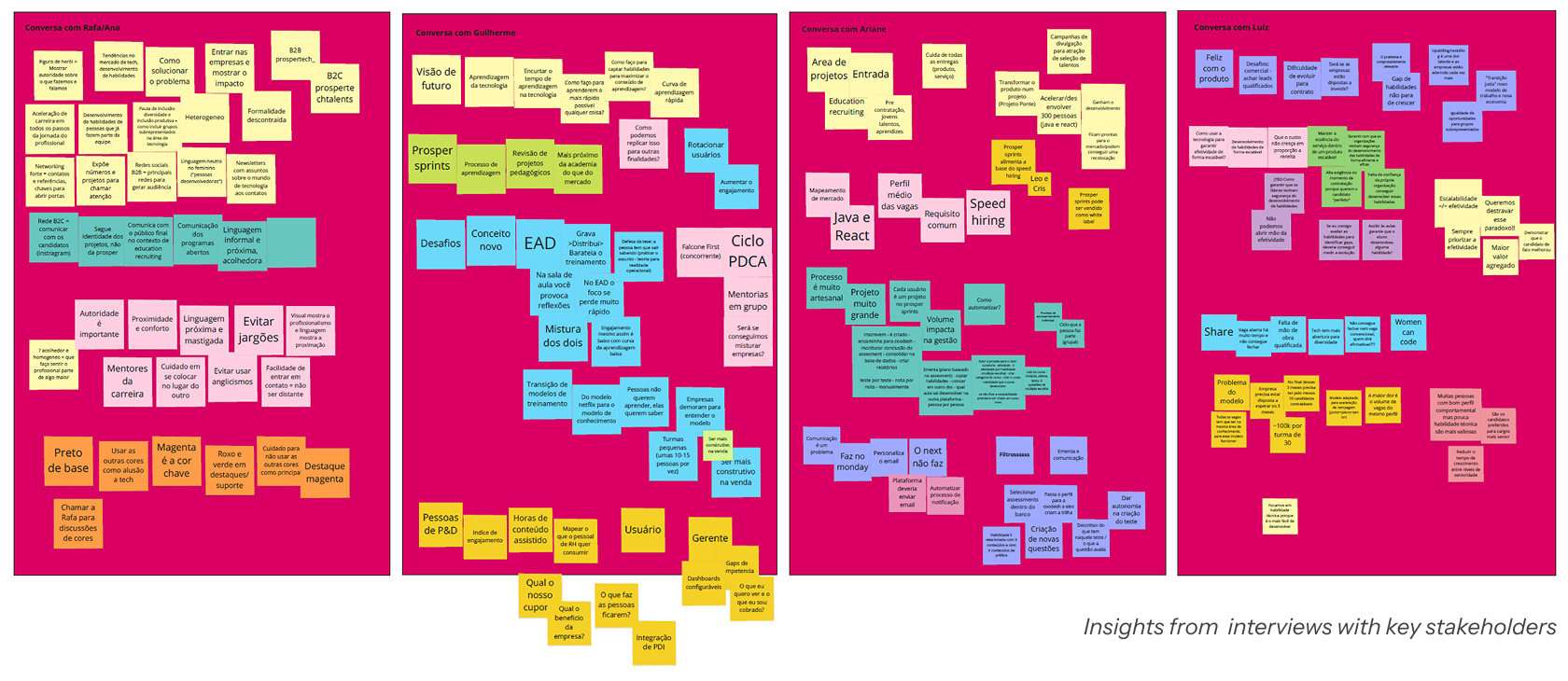
I also conducted quick market studies to complement existing research, looking to understand how similar problems were being addressed, focusing on industry trends and best practices in online assessments and upskilling. Since no Brazilian competitors were identified in this specific niche, the competitor analysis centered on feature differentiation rather than direct comparisons.
This holistic approach ensured the solution was grounded in both user and market needs, enabling us to efficiently refine the product vision.
04
Solving the problem
Definition and concept development
During this phase, many key artifacts were developed, including a user journey map, storymap, and actionable tasks derived from the expectations roadmap. These tasks were prioritized into a Minimum Viable Feature Set (MVFS) based on existing data.
Additionally, I developed the base design system, derived from the company’s brand, which included foundational components used across all interfaces. Custom components were introduced later in the process.
.png)
Ideation, feature development and validation
This phase focused on structuring the platform’s core. I defined the information architecture for the main features and developed the wireframes and prototypes required for the MVP. Both light and dark modes were designed in alignment with reading and contrast accessibility guidelines to ensure an inclusive experience.
Implementation and feedback loops
Finally, a small time slot was reserved to refine and implement the features. Although it didn't produce many artifacts, this phase was critical for delivering the final product.
The platform was tested internally with key users, gathering feedback to make quick UI adjustments before the production launch. This phase ensured a polished and user-ready platform at delivery.
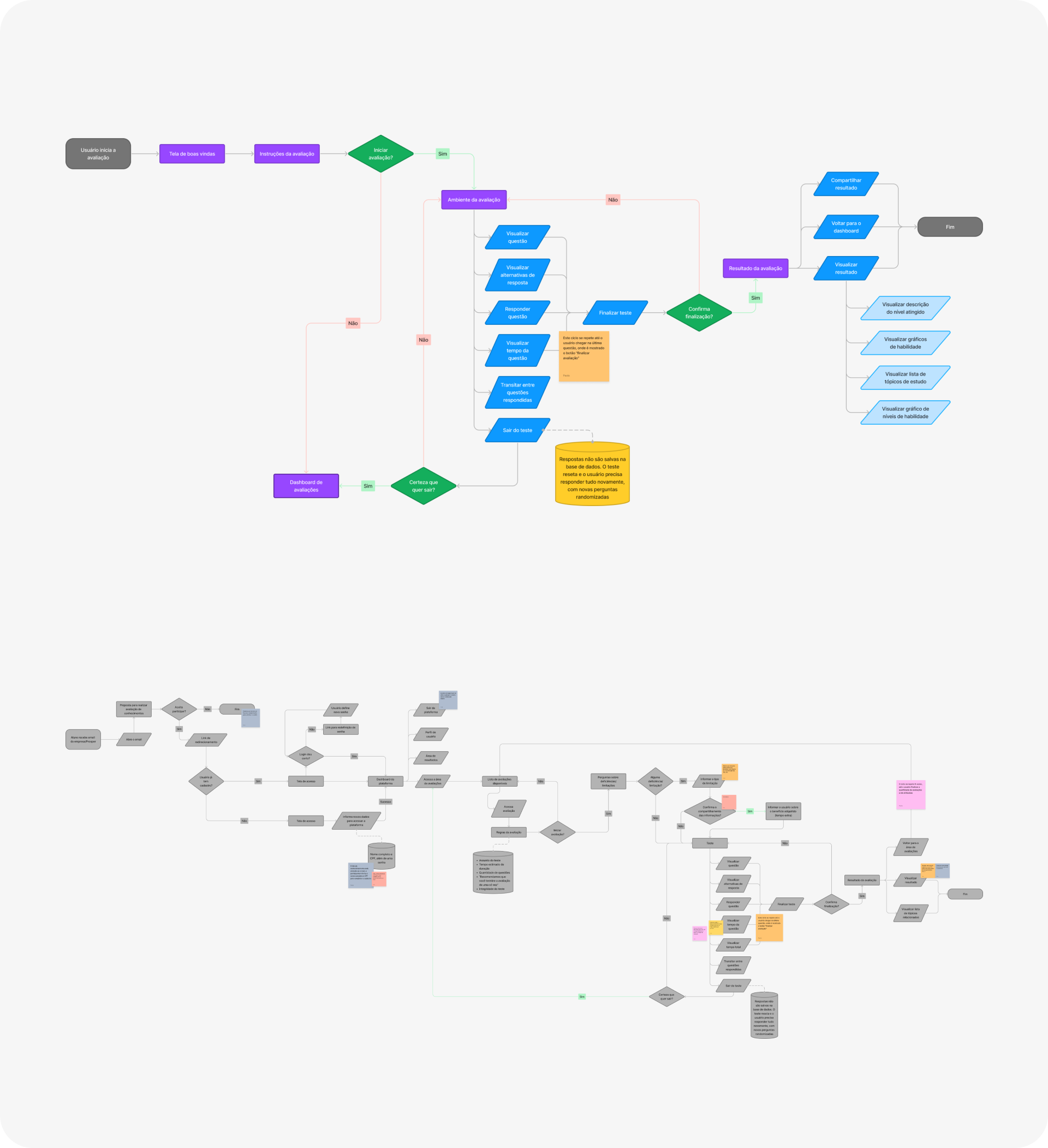
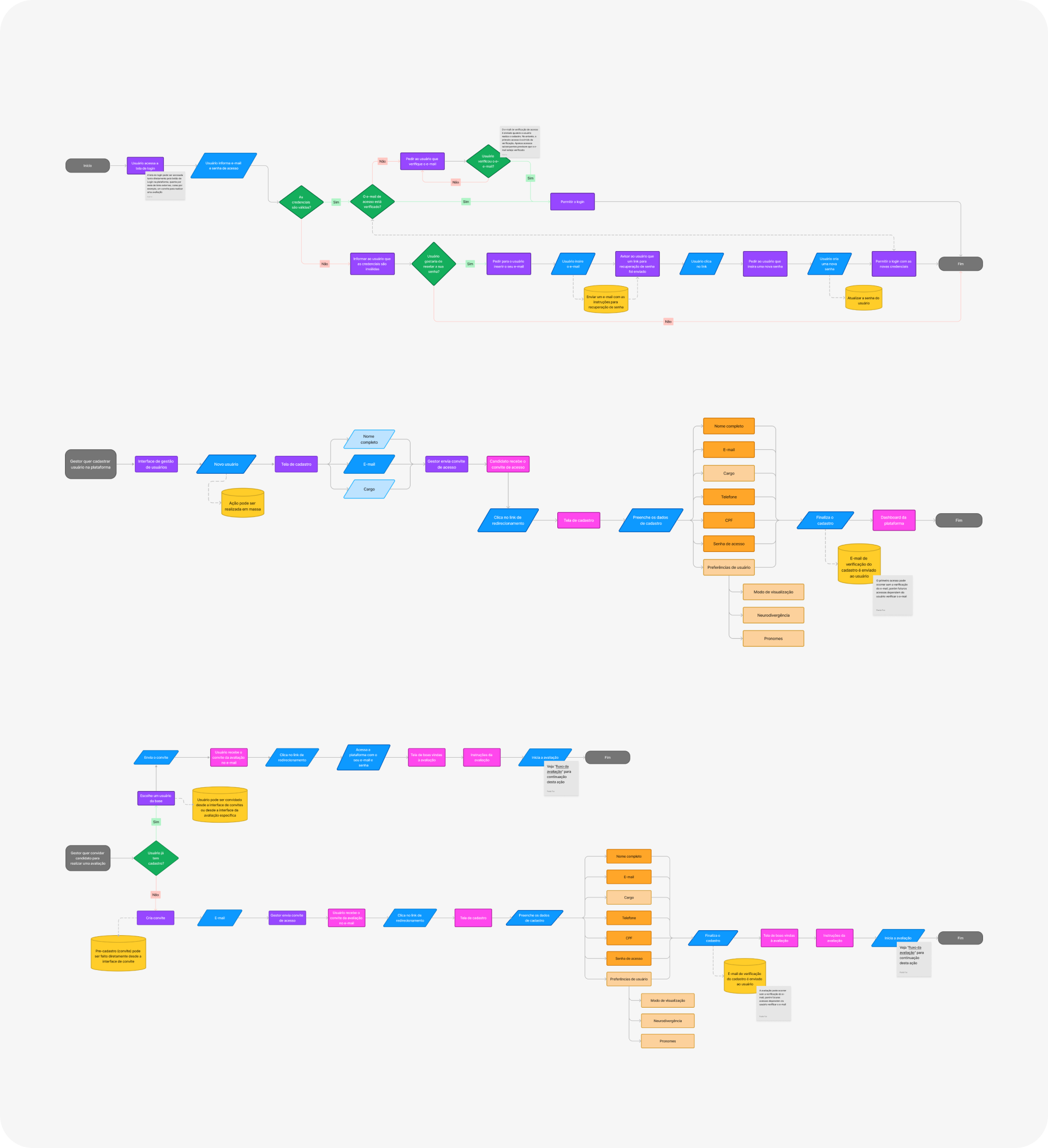
Wrap up
Challenges & Lessons Learned
From the beginning, the project faced several challenges. I worked within a tight six-month timeline that required careful prioritization and efficient workflows, while budget constraints limited the tech team to simple technologies, except for the AI used in assessment creation and grading. Accessibility was initially deprioritized, so I advocated for low-cost, high-impact solutions such as improved contrast and gender-inclusive language. With testing also placed at the bottom of the priority list, I relied on research and stakeholder feedback to guide critical decisions.
These challenges underscored the importance of adaptability, collaboration, and resourcefulness in delivering a successful product. For me, this project was proof that thoughtful design and strategic choices can overcome even the toughest constraints, leading to a solution that truly balances business goals with user needs.
